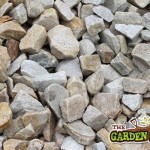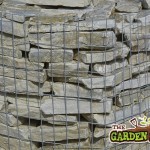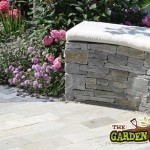Landscaping projects will always benefit from the additional of natural, decorative stone and there are many ways in which you can incorporate this product into your garden designs. Donegal Quartzite stone is one of the most popular decorative stone options available to Irish gardeners & landscapers. This stone comes in lovely natural hues of golden yellow, buff, cream & pink with all colours blending wonderfully to add a light yet warm feel to your garden
- Donegal Quartzite Chippings
- Donegal Quartzite STone
- Donegal Quartzite Wall
Donegal Quartzite is an angular chipping and is available in a number of sizes, it is also available in large boulders & you can have custom furniture built to bring different elements of the garden together.
Different applications require different chipping sizes. Donegal quartz looks great when used on garden paths. For garden paths you should use a chip size of 10mm to 14mm. This is a very comfortable size of chipping to walk on and because of the angular nature of the stone it doesn’t move about under foot
For flower beds you can used a larger chip size of 20mm to 30mm. This is ideal for use as a mulch to control weed growth & to offer a light backdrop & setting for your garden plants. When using any decorative stone you should first lay weed membrane on the surface & then apply a layer of stone ontop. Ideally a 3 to 4” layer of chippings is recommended to ensure full weed control and to ensure that you can’t see any weed fabric. At a depth of 3” or 75mm, a one ton bag of Donegal quartz would cover 10 to 13 square metres
Another excellent use for Donegal quartz is in water features. You can use this stone to line the base of water rills, ponds & reservoirs to provide an attractive base & look to your garden’s water scheme. Quartz looks particularly good in this setting as it’s colours will really stand out when the stone is wet
Because Donegal quartz is available in several sizes then a great idea is to use a series of different stone sizes to create a modern & crisp finish your gardens & planting schemes. To achieve this look you can start with an area of 10mm chipping and gradually increase to a 35mm chip, followed by small boulders and then a few single large boulders


